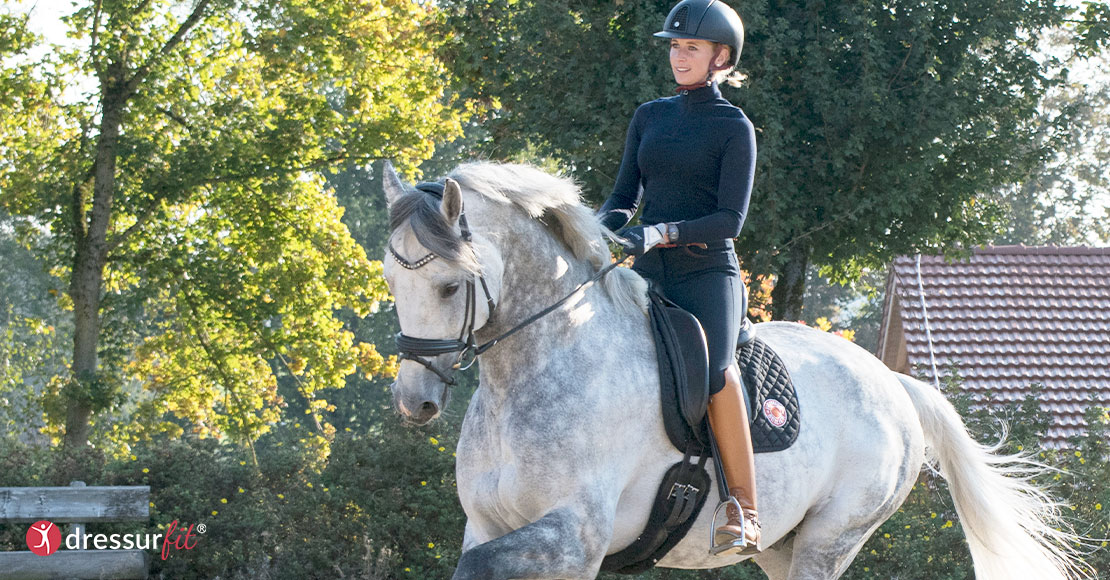
What defines a quiet, stable seat when riding?
When Olympic Champion Jessica von Bredow-Werndl gets into the saddle, she has one principle: “I don’t just want to avoid disturbing the horse; I want to be able to shape it.” For this, a quiet, stable seat when riding is essential—and this is achieved by the rider through a complete package of a strong back, a stable core, and mobile joints.
The two “areas” of the rider
From a sports physiology standpoint, the rider can be divided into two “areas”: one that needs stability and one that should remain mobile. “A stable area should be the core, allowing the rider to move their arms and hands independently—WITHOUT losing their physiological posture in the core. You have to sit relaxed on the horse while simultaneously maintaining body tension—that’s the big challenge in dressage riding,” explains fitness coach Marcel Andrä. “A mobile hip is extremely important, as are springy ankle joints—these are examples of the mobile areas. From a sports science perspective, ‘springy’ means that the joints should be mobile and have enough range of motion. The horse makes a 3-D movement—it moves in all three dimensions, forward and backward, up and down, as well as left and right—but primarily up and down. To sit as steadily but loosely as possible without, for example, wobbling your head or waist, a stable core and mobile joints are essential,” Marcel emphasizes. For relaxation combined with stability, the rider needs body control, mobility, and fitness.
Body control of the rider
Body control also includes good balance. When the rider has good balance themselves, they can better help the horse find their balance. Then they can “sit in” the horse. Jessica also emphasizes, “I need positive body tension to sit upright and have a soft and calm hand for the horse’s mouth. My hands and upper body must be able to spring independently with the movement. I need to be able to swing with the horse while keeping my hands steady so as not to disrupt the flow and maintain a soft, fluid aid.”
Targeted fitness training for a quiet and stable seat is the solution
When the rider has strength in their core, a stable back, and is mobile in the hips, they can sit quietly while swinging with the horse’s vertical movements—up and down. To develop a strong center in the saddle, it’s essential that our pelvis is correctly positioned, we sit on our sit bones, and the spine is properly aligned. This allows our hips to move freely. Conversely, if the alignment of the pelvis is incorrect and one sits predominantly on one side, the one-sided stress on that hip, and the horse’s back, increases. If the pelvis is tilted too far forward or backward, it affects the lower back and hip mobility. To achieve a quiet and stable seat, Marcel Andrä advocates for targeted fitness training for riders: “Those with a mobile hip, good posture, and positive body tension can implement most things much better while riding—and this can be optimally prepared on the ground and then taken into the saddle.”
Become a DressurFit® Member now: Simply sign up here and complete the first free DressurFit® test: CLICK HERE!
